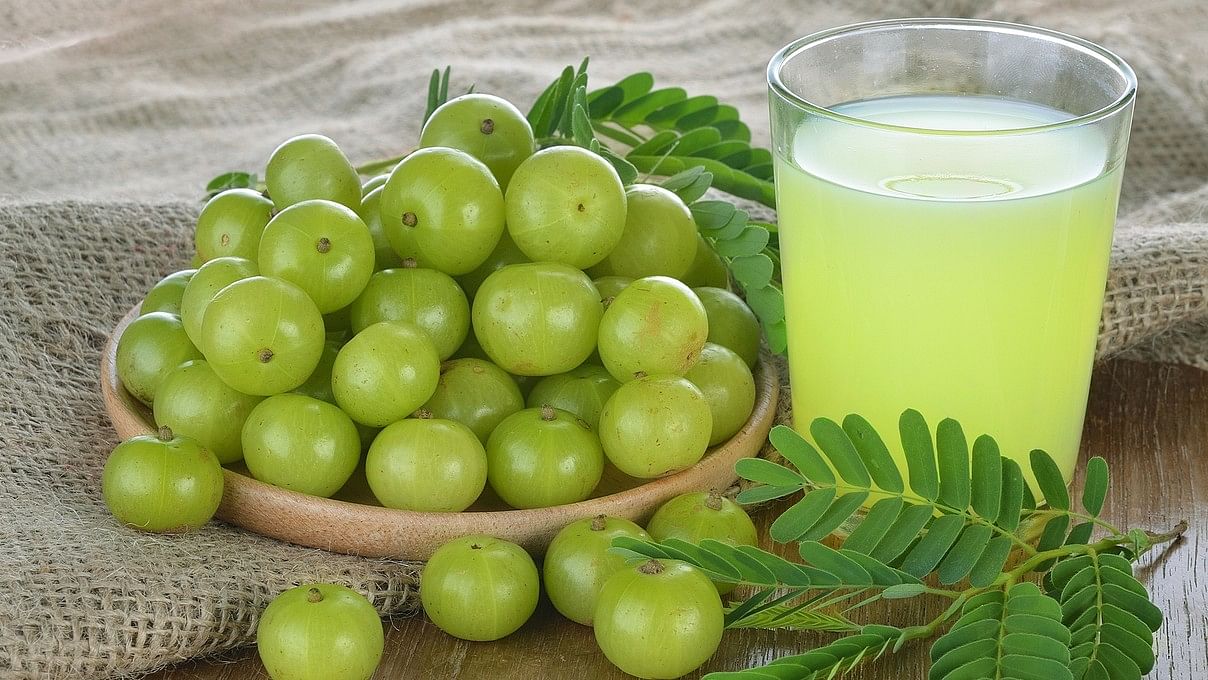
A photo of amla.
Credit: iStock Photo
In an achievement that will enable people to know more about amla, researchers from the Bhopal-based Indian Institute of Science Education and Research (IISER), have, for the first time, unravelled the draft genome of the Indian gooseberry plant.
Amla is a well-known plant indigenous to South Asian countries and has been used in traditional Indian and Chinese medicine and home remedies for centuries.
The stone-fruit of the Amla tree is believed to have high Vitamin C content, in addition to being a rich source of various phytochemicals, minerals, and amino acids.
Amla has been thought to be effective in treating conditions like unhealthy levels of fat, type 2 diabetes, chronic gum diseases, symptomatic knee osteoarthritis, and more. While Amla holds significant pharmaceutical and nutritional importance, its genetic composition has hitherto not been studied in detail.
Understanding the genetic composition of Amla can help understand their origins, evolution, and how they create the biochemicals that are of medicinal value.
The team, led by Dr Vineet Sharma, Associate Professor of Biological Sciences, includes Shruti Mahajan, Manohar Singh Bisht, and Abhisek Chakraborty from the ISCER-Bhopal.
The details of this research and the findings have been published recently in the open-access journal, Frontiers in Plant Science.
"We analysed the genome and transcriptome of the amla plant using leaves from our campus. We employed advanced sequencing technologies, including 10x Genomics and Oxford Nanopore Technology (ONT) long-read sequencing, along with transcriptomic sequencing,” Dr Sharma said.
Apart from obtaining the draft genome structure of the Amla for the first time, the researchers also identified genes responsible for vitamin C biosynthesis and compared them with genes in other plants that bear vitamin C-rich fruits.
The team found that Amla's exceptional antioxidant power comes from the adaptive evolution of certain genes involved in the production of antioxidants like vitamin C and flavonoids. Amla's abundant vitamin C content and the remarkable capacity of each tree to yield up to 100 kg of fruits make it superior to other vitamin C-rich fruits such as the West Indian cherry from Mexico and the camu camu fruit found in Brazil, Peru, Colombia, and Venezuela and makes it a perfect choice for switching from the synthetic to a natural source of Vitamin C.
According to the research team, the adaptive evolution of this plant could be one of the key reasons for its easy adaptation to various climatic zones and environmental conditions.
Highlighting the significance of their study, Dr Sharma said, “The analysis of the whole genomic landscape of the Amla also helped us in understanding its evolutionary descent in comparison with 26 other plant species. It will also help in developing improved nutraceuticals, food, cosmetics, and pharmaceutical products, and for further horticultural and genomic studies.”